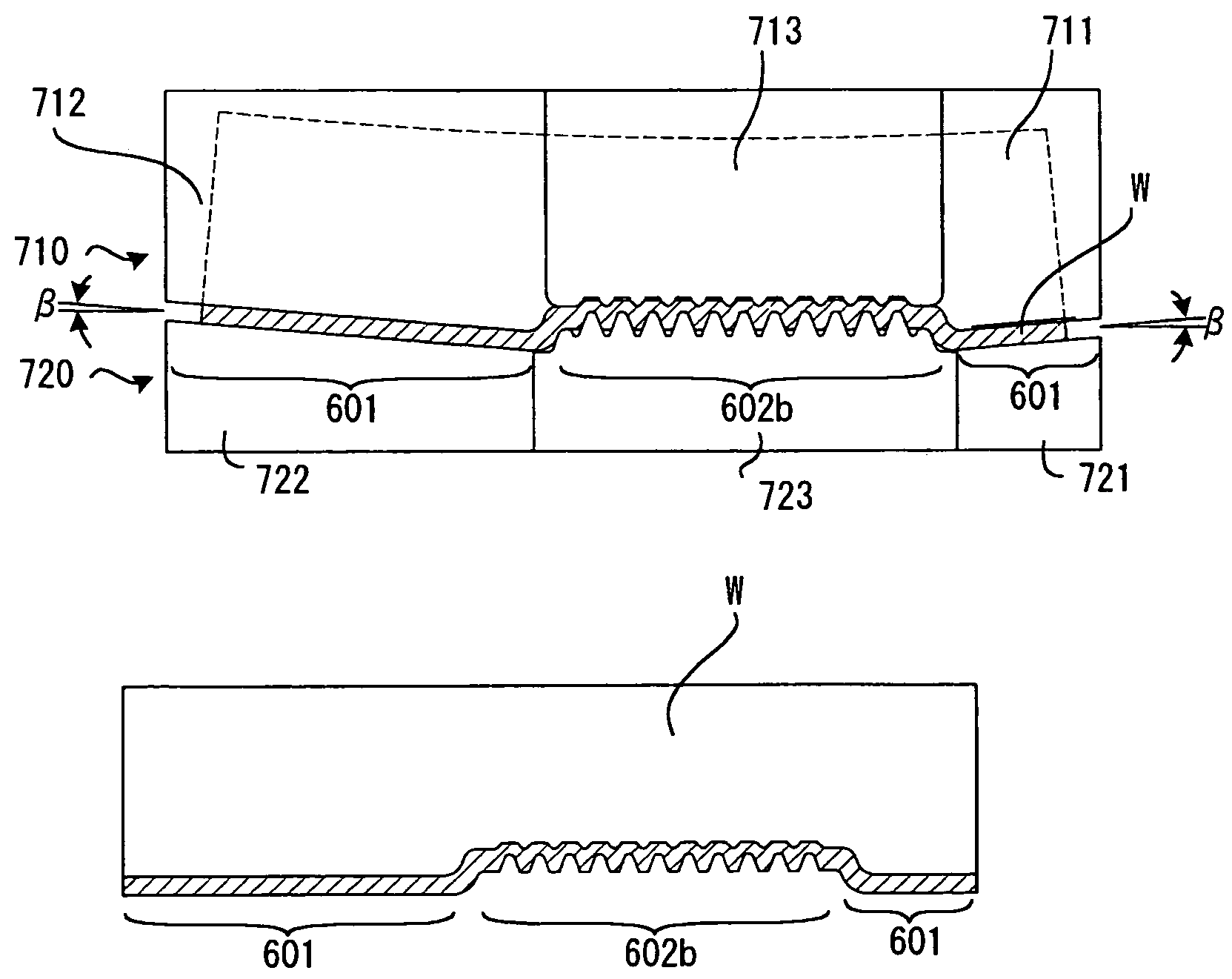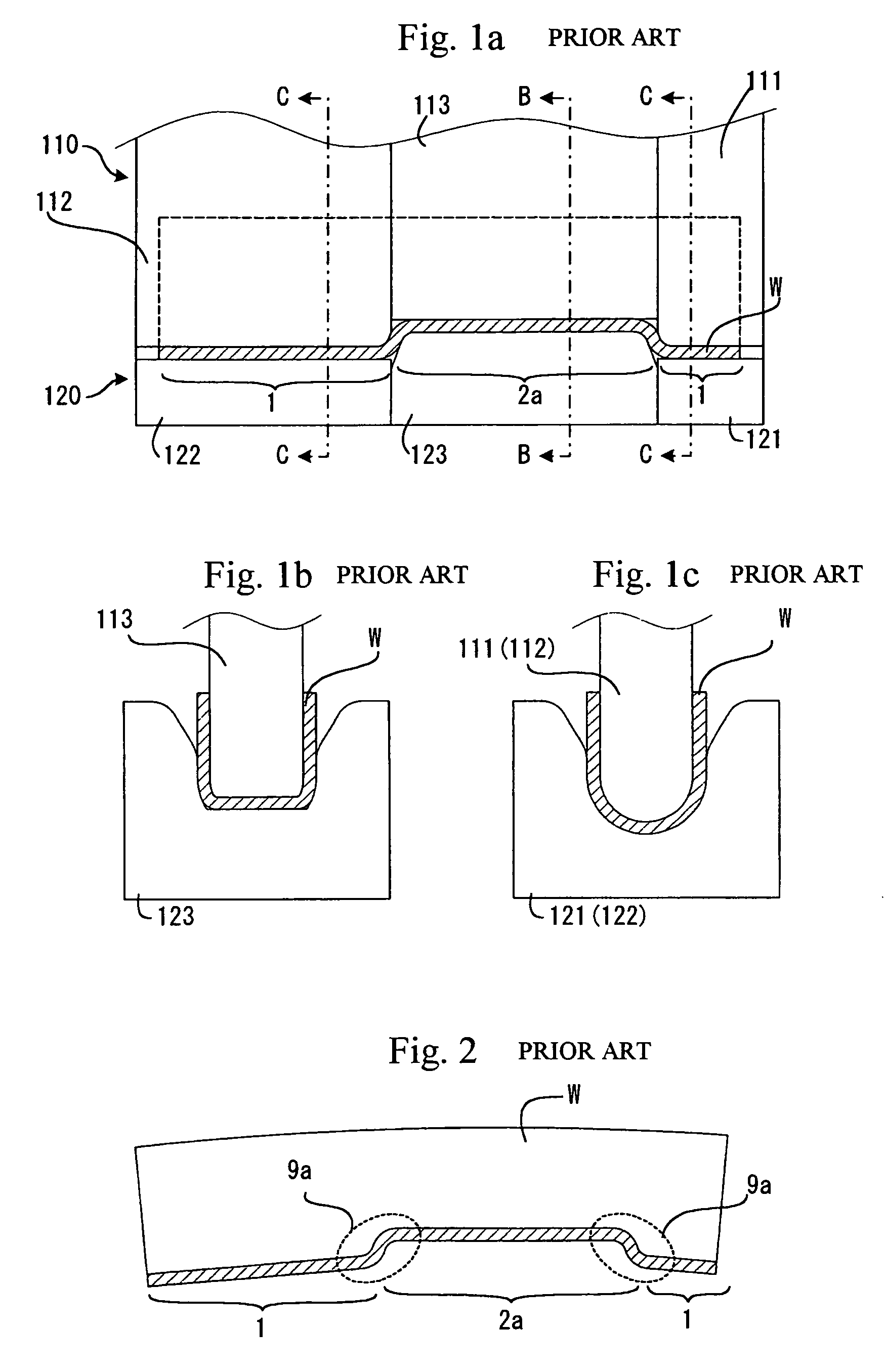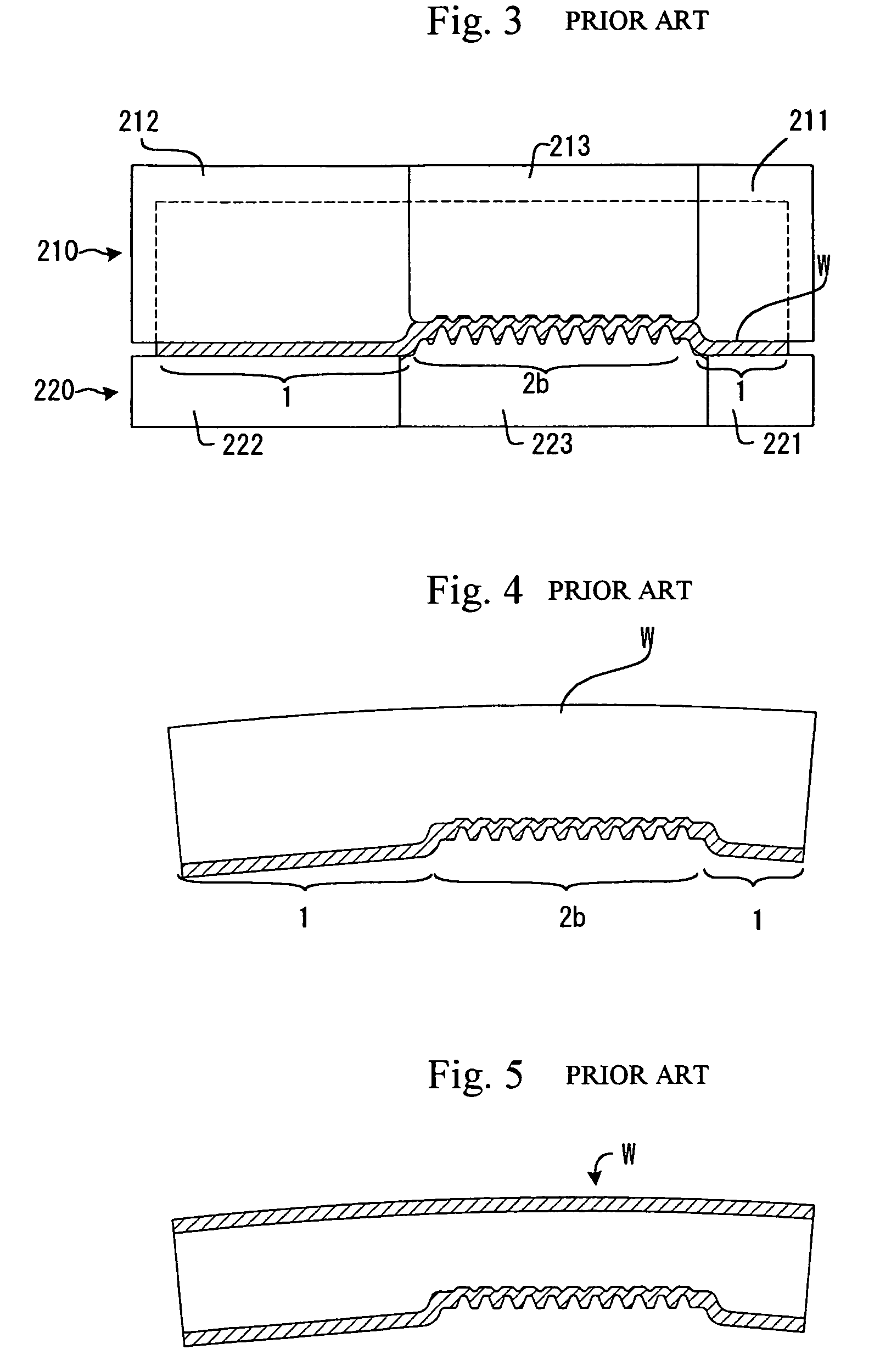Method for manufacturing a hollow rack shaft
a manufacturing method and hollow rack technology, applied in forging/pressing/hammering apparatus, television systems, forging/hammering/pressing machines, etc., can solve problems such as large deviation, and achieve the effect of removing elastic deformation
- Summary
- Abstract
- Description
- Claims
- Application Information
AI Technical Summary
Benefits of technology
Problems solved by technology
Method used
Image
Examples
first embodiment
[0064]FIG. 10 is a longitudinal sectional view for showing a flat plate workpiece having been formed into a gutter-like shape (a final end of a press stroke) during the first step of the method of this invention. In the same manner as that of the prior art, upon completion of the first step, the plate workpiece W has a flat bottom at its central portion, and the workpiece is formed into a gutter-like shape including an unformed flat portion 602a in which to form rack teeth during the second step and a semi-circular portion 601 having a semi-circular bottom part. The die set used for this operation is also similar to that of the prior art. Namely, the die set comprises an upper die set 610 including a right upper die 611, a left upper die 612 and a central upper die 613; and a lower die set 620 including a right lower die 621, a left lower die 622 and a central lower die 623.
[0065]However, this invention is different from the prior art in view of the fact that the die surfaces of the...
second embodiment
[0069]In a second step of a second preferred embodiment, the die surface is provided with a recess for releaving an excessive increase in pressure in the die clearance at the end of the stroke of the pressworking. FIG. 14 is a longitudinal section for showing a die set 803 including a central upper die 813 and a central lower die 823 used in the second step, and the workpiece W formed by this die set. It should be noted that FIG. 14 to FIG. 19 are different from FIG. 1 in view of the fact that the upper or lower side of the workpiece W is reversed.
[0070]Each of the central upper die 813 and the central lower die 823 is a split type die composed of a plurality of segments 813S, 823S. Symbols 813D, 823D denote their dividing lines. The extremity of each of the segments 823S has a shape corresponding to one surface of the rack teeth and forms one rack tooth with the same shape of another adjoining segment 823S. Similarly, the extremity of each segment 813S is provided with a shape corr...
third embodiment
[0080]The aforesaid problem of the third step in the prior art, that is, the back surface of the rack shaft cannot be formed into a true circle, is resolved by using a mandrel as shown in FIGS. 20a to 22c. FIGS. 20a, 21a and 22a are front elevation sectional views; FIGS. 20b, 21b and 22b are sectional views taken along line B—B in each of the front elevation sectional views; and FIGS. 20c, 21c and 22c are sectional views taken along line C—C in each of the front elevation sectional views. The same reference symbols in FIGS. 7a to 9c are used in these figures except for the symbol 112 of the mandrel.
[0081]The workpiece W formed with rack teeth upon completion of the second step is placed on the lower die set 320. At this time, as shown in FIGS. 20a to 20c, the workpiece W is placed such that the two legs 6 are facing up. The upper surface of the central lower die 323 is complementary to the rack tooth shape, and each of the rack teeth is fitted to this complementary rack tooth surfac...
PUM
| Property | Measurement | Unit |
|---|---|---|
| elastic | aaaaa | aaaaa |
| shape | aaaaa | aaaaa |
| pressing angle | aaaaa | aaaaa |
Abstract
Description
Claims
Application Information
 Login to View More
Login to View More - R&D
- Intellectual Property
- Life Sciences
- Materials
- Tech Scout
- Unparalleled Data Quality
- Higher Quality Content
- 60% Fewer Hallucinations
Browse by: Latest US Patents, China's latest patents, Technical Efficacy Thesaurus, Application Domain, Technology Topic, Popular Technical Reports.
© 2025 PatSnap. All rights reserved.Legal|Privacy policy|Modern Slavery Act Transparency Statement|Sitemap|About US| Contact US: help@patsnap.com



